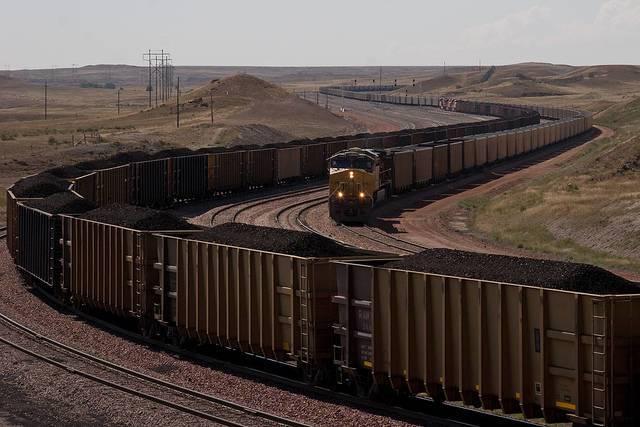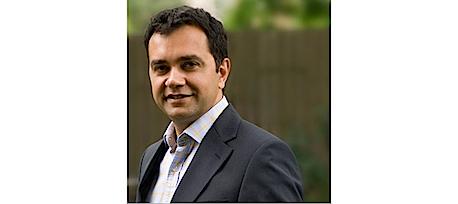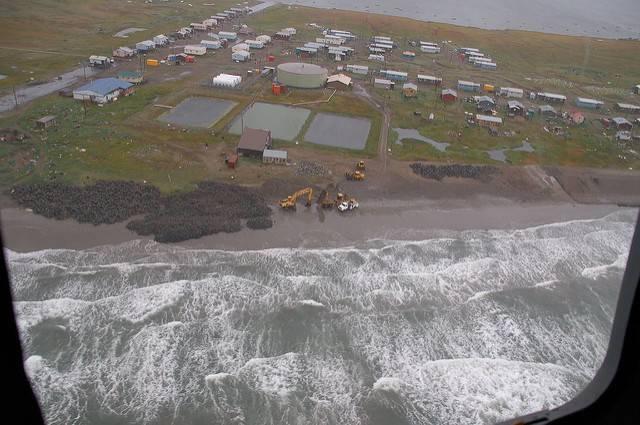Paint the Town Green: Greenwashing Still Alive and Well


By: Daniel Daggett
Environmentally friendly. Recyclable. Non-toxic. If you’re purchasing a product or using a service that touts these claims, you would assume that you’re supporting a responsible organization. But what if those attributes were only being promoted to sell the product or service, and didn’t necessarily hold their weight under closer review? Greenwashing is more common than you may think.
A 2010 analysis of nearly 5,300 home and family products found that 95 percent made problematic green claims. With many consumers in search of environmentally friendly products, it’s worrying that many claims are exaggerated or completely unsupported. So how can consumers spot greenwashing during the purchasing process? And what safeguards are in place to prevent unscrupulous marketers from unfairly targeting consumers?
The watchdog of greenwashing
In the U.S., the Federal Trade Commission (FTC) serves to maintain competition in the marketplace and protect consumers from fraudulent business practices. In 2012, in response to the rise of greenwashing, the FTC revised its guidelines on environmental claims to ensure that they are truthful, relevant and verifiable. During the purchase process, consumers should ask themselves three questions. Are the company’s claims accurate? Do the claims relate to the product? For instance, a lead-free claim for a cleaning product is irrelevant because these products shouldn’t ever contain lead. And finally, can the claims be scientifically proven with data?
The FTC’s guidelines help protect consumers from potentially vague, broad or misleading claims, such as recyclable, non-toxic, compostable, degradable, “free-of” and more. For example, the FTC states that in order for a product to be truly recyclable, it must be able to “be collected, separated, or otherwise recovered from the waste stream through an established recycling program for reuse or use in manufacturing or assembling another item.” And items that are only partially recyclable should clearly state which components can be recycled and which cannot. Responsible organizations follow the appropriate guidelines and clearly define the specific environmental benefits of their product or service rather than using generic, potentially deceptive language.
Third-party certifications
With so many “green” labels and claims floating around, some of which are manufacturer-created, buyers are left wanting more credibility from companies. Sixty-five percent of consumers around the world agree or strongly agree that they would purchase more environmentally responsible products if the health and environmental claims made by companies were more believable. Certifications are an answer to this issue, because they assure that a sustainable product meets a certain set of performance criteria. However, not all certifications are created equal.
Some certifications are industry-led, and therefore not entirely independent. The Global Ecolabelling Network is a non-profit network of 27 independent organizations representing more than 50 countries that seeks to establish a set of standards and framework for environmental certifications. In North America, members include UL Environment and Green Seal Inc.
For products that have reduced the impact on the environment, UL administers ECOLOGO Certification, a multi-attribute sustainable product certification, while products with low chemical emissions that contribute to better air quality are recognized with the GREENGUARD Certification. UL also provides Environmental Claim Validation (ECV) which evaluates product’s specific environmental attributes, such as recycled content and VOC content. For consumers, the ECV is especially important because it uses a science-backed method to validate specific claims that a company makes about their products. Recent research from UL further validates the importance of third-party certifications. The organization’s 2015 study polled more than 1,000 U.S. consumers and found that when evaluating green claims, 93 percent of consumers noted a certification as one of their top three factors for choosing a product.
Sustainability: becoming non-negotiable?
Over the years, sustainability has transformed from something that only a few people cared about to a sought-after feature of products and services. In fact, according to the 2014 Eco Pulse study by the Shelton Group, 70 percent of Americans are searching for greener products.
In addition to consumers, businesses are also stepping up their commitment to the planet. Many organizations are specifically interested in solutions that will make a measurable impact in the areas of public safety, waste, energy and water. After all, sustainability has a positive impact on not just the environment, but society and the economy. A 2014 analysis of S&P 500 companies found that businesses that incorporate sustainable practices have an 18 percent higher ROI compared with non-sustainable competitors.
In some parts of the world, sustainability is simply viewed as an added benefit rather than a must-have. However, more and more, industries and organizations are defining sustainability and green practices as requirements. For example, some state laws require products used in government buildings to carry third-party certifications, demonstrating their environmental performance. Additionally, the U.S. Green Building Council’s Leadership in Energy and Environmental Design (LEED) v4 for Building Operations and Maintenance requires buildings pursuing LEED to use certified products and practice green cleaning, whereas this was previously considered an optional credit.
As sustainability continues to be a top-of-mind concern for businesses and consumers, third-party certifications and responsible marketing will become more important for curbing the practice of greenwashing and driving business success. UL’s 2015 survey found that nearly 60 percent of consumers would pay up to 10 percent more for a product with third-party certifications. If credibility is so valuable to buyers and lucrative to businesses, there’s no reason not to have your product or service vetted and certified by an independent organization.
Daniel Daggett, Ph.D., is the Executive Director- Global Sustainability at Sealed Air, where he is responsible for developing and implementing sustainability strategies across the business. For more information, visit https://sealedair.com/.
How do leaders bring purpose to life in organisations?


UN to Airlines: Do More to Fight Human Trafficking


Air travel is one mode of transportation expected to grow rapidly in the near future: the International Air Transport Association (IATA), for example, expects the number of air passengers worldwide to double over the next two decades.
But with increased air travel comes the risk that human trafficking will increase as well. To that end, a United Nations representative spoke at the IATA’s most recent international conference to urge the world’s airlines to do more to stop the trafficking of men, women and children.
"Conflict, crisis, climate change, and poverty mean that 65.3 million people are on the run, leaving their houses and shelters behind within their countries or across borders," said Jean-Luc Lemahieu of the UN’s Office on Drugs and Crime to an audience at the IATA’s Annual General Meeting last week.
The challenge with human trafficking is that to the untrained eye, it is often difficult to detect. Such passengers, and perpetrators of these crimes, can often blend in with human migration patterns. The problem, according to many NGOs, keeps getting worse. According to the International Labor Organization (ILO), at least 21 million people worldwide have been subjected to human trafficking and find themselves into forced labor – and a majority, or approximately 11.4 million of them, are women and girls. As a result, 3 out of 1,000 people worldwide are often trapped into work into which they are coerced and find it almost impossible to escape.
The IATA has responded in kind to this human rights crisis, and insists that it will work with its member airlines in order to boost training and raise awareness about this problem. The organization has been discussing human trafficking more on social media platforms such as Twitter and Facebook, and has also rolled out a training program that it says can equip airline employees to curtail this clandestine crime. And while plenty of crime syndicates transport people across borders in order to exploit them, many victims of human trafficking are actually trapped into jobs within their own country, according to a recent IATA Facebook Live discussion.
To that end, U.S.-based air carriers say they have been aggressively working on this problem for the past several years. Airlines including JetBlue and Delta have participated in the Blue Lightening program, a partnership with U.S. Customs and Border Protection to help airline personnel to identify potential human traffickers and their victims. According to Reuters, 70,000 U.S. airline staff have completed training under this program.
One of the more public examples of identifying a human trafficking victim occurred on an Alaska Airlines flight earlier this year. A flight attendant working on a plane flying from Seattle to San Francisco grew suspicious at the body language between a girl who appeared to be in her teens who was traveling with an older man. The girl wrote on a note that she needed help, the pilot communicated with airport personnel, and upon arrival, police were waiting for the flight when it landed in San Francisco.
Other aviation industry organizations have also been on the forefront of fighting human trafficking. Airline Ambassadors, a non-profit also aligned with the UN, has also worked with the U.S. federal government to develop training programs to fight back against human trafficking. The Association of Flight Attendants, the labor union to which many airline industry employees belong, in recent years has urged its members to be vigilant in order to stop this crime.
The challenge, of course, is to identify human traffickers versus migrant smugglers or even everyday families who are simply traveling together on holiday. Furthermore, the airline industry could do more to educate all air travelers to identify the signs of trafficking. Atlanta’s airport, one of the world’s busiest air travel centers, had become a hub for sex trafficking children, and local and federal officials have responded in kind. As CNN’s Richard Quest noted during last week’s IATA Facebook Live on human trafficking, “If you go to Atlanta airport, it’s one of the few airports that has anti-human trafficking slogans; I don’t think I’ve seen them in most airports.”
The criticism of airlines in the past is that they were loath to take on this issue as publicized incidents were seen as a risk to their brand reputation. But increasingly, consumers expect companies to be proactive on social issues – and airlines are no exception, as these companies are in a unique position to tackle this issue head on and become heroes instead of bystanders.
Image credit: Andrew E. Cohen/Flickr
1200+ Businesses, Cities and States Tell World "We're Still In"


President Donald Trump's bombshell announcement on June 2 from the White House rose garden couldn't have been better timed. The world was waiting and he had a message for global leaders: The U.S. wouldn't be coerced into supporting a global accord it didn't support.
"We're getting out," he announced defiantly. "I was elected by the citizens of Pittsburgh. Not Paris."
Well, the city of Pittsburgh has news for Trump: It's still in the Paris Climate Agreement.
In fact, so are more than 120 other cities and counties that this week joined a growing coalition of voices to say that the federal government's position on climate and carbon emissions won't be enforced inside their city limits. So far, 12 states -- including Pennsylvania -- signed a letter to tell Trump that "we are still in" Paris and don't intend to back down from their efforts to reduce carbon emissions.
They have also criticized the Trump administration's position, saying that it "undermines a key pillar in the fight against climate change [and a move which is] out of step with what is happening in the United States." States, cities and other regional governments intend to march on in support of Paris.
"California will do everything it can to not only stay the course, but to build more support — in other states, in other provinces, in other countries," California Governor Jerry Brown told the Los Angeles Times. " Brown has been an outspoken critic of the Trump administration's policies on environment.
So has Connecticut Governor Dan Malloy, who has sparred with Trump on several occasions regarding federal immigration policies. His criticism of the president's failure to keep the U.S. at Paris echoed a growing sense of unity among businesses and non governmental organizations that see no choice but to stay in the accord, but were hoping for federal leadership in the process.
"For our part, in Connecticut we will continue building on our efforts to address climate change with common sense, practical initiatives that will help to build and grow our economy. Unfortunately, we lack a strong partner at the federal level as we go about this incredibly important work." said Malloy in a statement.
So far more than 900 businesses and investors and 180 educational institutions across the nation have signed a letter to the international community vowing to stand behind the Paris agreement and to continue to work to reduce carbon emissions. The list includes 20 Fortune 500 companies, including some of the biggest names in the tech industry. Apple, Microsoft and Adobe have signed on, as have Mars, Inc., Bloomberg, LP, Ben & Jerry's, Patagonia and The North Face. Investors include a variety of asset management companies and NGOs, including the Sisters of St. Joseph and The California Public Employees' Retirement System.
"In the U.S., it is local and state governments, along with businesses, that are primarily responsible for the dramatic decrease in greenhouse gas emissions in recent years. Actions by each group will multiply and accelerate in the years ahead, no matter what policies Washington may adopt," the letter states.
It's unclear if Donald Trump simply miscalculated the lack of support his announcement would receive, but there have been plenty of takeaways to note from this latest outcry.
First, public discord with Trump policies is becoming more common, creating an odd consensus among Democrat and Republican leaders that stopping climate change is critical.
Second, his decision to pull the country out of Paris may have done exactly the opposite of what Trump had hoped: Rather than lending weight to the argument that global warming is unproven, he has has galvanized vocal support for climate change. Both Democrats and Republicans have expressed concern with his environmental policies. In what seems like an unusually bold move by Montana's Governor Steve Bullock, it's forced leaders that represent a fairly conservative rural constituency to declare unilateral support for climate action.
"Ask any Montana farmer, rancher, hunter, angler, or skier – climate change is real and poses a threat to our economy and way of life. To not acknowledge that or deal with it in a responsible way is short-sighted and dangerous," said Bullock, a Democrat, who won his gubernatorial seat in 2016 by just 4 points over his Republican contestant.
And third, regional governments and businesses are now acutely aware that their support of Paris policies is only part of what it will take to address global warming.
As Brown noted, ""The complexity and scope of climate issues calls out for federal leadership and federal rules and laws." An absence of federal support may hurt efforts to increase jobs needed in the green sector.
As is so often his approach, Trump did leave a back door open to returning to the Paris agreement by suggesting that he would be willing to "negotiate" the terms of U.S. participation in the future. It's unclear however, whether European nations will be just as willing. Like America's many independent businesses and regional governments, European states are determined to meet Paris goals -- with or without more time-consuming meetings with Washington.
Flickr image: California Air Resource Board
BlackRock Investments: ‘Coal is Dead’


During a recent interview, Jim Barry, a managing director of BlackRock and global head of the investment firm’s Infrastructure and Investment Group, recently declared that “coal is dead.” While he acknowledged that coal will still be part of many countries’ energy portfolios, Barry said any investor who is seeking returns from coal beyond 10 years from now is “gambling very significantly.”
The New York-based investment firm, which describes itself as the world’s largest investment managers based on the $5.1 trillion in assets under its wing, has been bullish about renewables and other clean technology developments for several years.
And largely due to the cheap cost of renewables, Barry and BlackRock are sanguine about these technologies’ future. Barry was also optimistic during the interview on the outlook for electric cars, due to their improved range and the declining cost of battery storage. While talk of “peak oil” has been underway for years, Barry views the oil markets through a different lens, insisting that “peak demand,” not just supply, is a dynamic that investors should not ignore. As consumers embrace electric vehicles, the demand for oil will continue to decline – with the end result a cloudy future for conventional energy companies with large oil reserves on their books.
On the investment front, BlackRock has certainly put its money where its mouth is. The company has managed its own clean energy index fund since 2008, although that fund has largely struggled: the Global Clean Energy ETF had a banner year in 2013, but was flat for the next two years, and its price fell another 16 percent last year. Another one of its funds, the BGF New Energy Fund, has been on an upward trajectory over the course of this decade. BlackRock has also directly invested in clean power projects, as in the purchase two years ago of a 50 percent stake of a 200MW wind power installation in Texas.
Meanwhile, BlackRock has long advised investors that they can no longer ignore the risks that climate change and water scarcity may impose on their portfolios, and has insisted they strive to become more efficient when it comes to resource consumption. “Companies that generate more sales with less carbon, water and waste are deploying resources more efficiently,” wrote the co-authors of a report on climate change impacts last year.
In recent years, the company has suggested strategies for financial institutions on how they can develop tactics to push the companies in which they invest to become more socially responsible. BlackRock has also challenged conventional wisdom about corporate governance issues across its global offices: earlier this year, it warned companies in the United Kingdom to link executive pay to performance, or otherwise they could put themselves at risk of shareholder revolts.
While BlackRock is increasingly warning investors about climate change risk, it is hardly perfect - which, in fairness, is a criticism that can apply to plenty of companies and individual investors. Shortly after the release of its latest climate change advisory in September 2016, Greenpeace accused the company of having investments totaling at least $1.5 billion in various fossil fuel companies across China. Coal may be close to dead, but it still has its foothold on the world’s energy supply – and for many people and companies alike, divestment is often easier said than done.
Image credit: Kimon Berlin/Flickr
A U.S. Carbon Club to Meet Paris Commitment -- Without the Feds


By Kasey Krifka
In light of U.S. President Donald Trump’s withdrawal from the Paris climate accord, The Climate Trust, a mission-driven nonprofit that specializes in mobilizing conservation finance, is advocating for the formation of a U.S. Carbon Club as a credible solution to meet our Paris commitment. A Carbon Club (CC) would harness the spate of corporate, state, and municipal climate commitments to chart a meaningful path to climate stability.
Carbon Clubs are receiving increasing levels of attention. A club framework incentivizes active participation by members to achieve climate-friendly outcomes. Member corporations would agree to measure, reduce and pledge to offset their remaining impact.
While the announcement to renege on the Paris Agreement, an historic commitment of 195 countries and parties to reduce greenhouse gas emissions and protect our planet from the climate crisis, has sparked dismay and anger around the world, The Climate Trust believes that progress toward a sustainable future will continue.
Nations and governments like China and the EU are stepping up to fill the leadership void, while at home, American cities and states have been energized to act on climate, despite massive federal rollbacks of environmental regulation.
The momentum is promising, however, significant commitment and resources lie with the corporate sector. Prior to last week’s presidential announcement, more than 760 business and investors had called on Trump to support the Paris pledge. While this is a positive signal, en-masse active support by U.S. corporations is vital if we hope to meet our climate goals under the Paris Agreement. Within the next two years, more than 1,200 firms are using or planning to use an internal carbon price that is then incorporated into business and investment decisions.
“A Carbon Club strategy has gained importance following this announcement to withdraw from the global climate accord,” said Sheldon Zakreski, director of asset management for The Climate Trust. “The Carbon Club would give the U.S. a real shot at meeting our targets—despite abysmal and alarming federal actions.”
“Efforts by conscientious U.S. corporations that urged Trump to stay [in the Paris Agreement] were to no avail,” said Sean Penrith, executive director for The Climate Trust. “Full-page ads have not worked; it is now up to us to take action. Let us catalyze the commitment of our corporations to take tangible actions at mitigating emissions. Let's establish a U.S. Carbon Club to keep us on track with the Paris commitment and protect the health of our planet for generations to come.”
In practice, a U.S. Carbon Club would be compatible with the U.N. Framework Convention on Climate Change (UNFCCC) and largely mimic the international effort of Climate Neutral Now. It would solicit solid pledges from member corporations to reduce emissions and fund the balance of reductions needed to achieve the GHG target committed to by the U.S. under the Paris Agreement. This firm commitment would catalyze climate-friendly projects across the country to deliver real, verifiable, and permanent reductions.
Sectors that include agriculture, forestry, wetland restoration, fertilizer management, grassland conservation, livestock waste management, rice cultivation, and fugitive methane emissions would be eligible to develop reductions. These registered carbon credits would be delivered to Carbon Club members in accordance to their pledge in return for payment. Members could retire the credits to offset their own internal carbon footprint or bank them.
This bold effort will advance the U.S. towards its Paris goals, put a price on carbon nationally, and stimulate climate-friendly projects throughout the country.
Image credit: Flickr/Tommy Clark
Kasey Krifka is the Senior Marketing Communications Manager for The Climate Trust
Getting good guidance


Kabul Bombing Claims Over 30 Employees of Telecomm B Corp


Last week’s truck bombing outside the German embassy in Kabul, reported to be the deadliest attack in Afghanistan since the American invasion in 2001, killed over 150 people and injured more than 300 people. Amongst those who died were over 30 employees of Roshan, a telecommunications company that is one of Afghanistan’s largest private employers and has been recognized as a leader in the global B Corp movement since 2012.
Ironically, Roshan’s various services includes its specialization in repairs to telecommunications infrastructure after explosions similar to last Wednesday’s blast.
In a country where steady work is often difficult to find and unemployment may run as high as 40 percent, Roshan employs over 900 people, 20 percent of whom are women. Not only is the company a vital communications link with its 6.5 million subscribers in all 34 of Afghanistan’s provinces, but Roshan has been a leader in rebuilding communities across the country of 31 million people. The company has also funded various social enterprise, energy access and women’s empowerment projects throughout Afghanistan. With its services adding an estimated 30,000 more jobs to the country’s economy, Roshan has become not only a popular employer but has served as a critical economic multiplier across Afghanistan.
Founded in 2003, the company has emerged as one of the few successful Afghani export companies with its expansion of services to African nations such as Burundi, Tanzania and Uganda. Roshan’s technology had a role in expanding mobile telephony access amongst Afghanistan’s citizens from less than 1 percent in 2001 to over 70 percent today. And Roshan’s M-Paisa, which in 2008 became Afghanistan’s first mobile telephony money transfer service, has helped boost financial literacy in a country where 90 percent of its citizens are still unbanked. The company’s community work has garnered many corporate citizen nominations and awards over the years, including being named several times as a Best for the World honoree.
As with the case of many bombings in Afghanistan over the years, local citizens, including Roshan employees, were overwhelmingly the ones who died in this bombing. "Afghans. It's always Afghans," said one local Kabul resident to CNN, when the news outlet asked her who suffered in such attacks. "It's always Afghans that are harmed and get killed, rather than who the attacker wants to target."
B Corp has partnered with the non-profit Mercy Corps to set up a fund that is accepting donations to support the families of Roshan employees who have either been killed or wounded in the explosion. Many of those lost were the sole breadwinners for their families, so financial assistance is urgently needed.
Image credit: Roshan
NPR and Starbucks: Polarizing Brands that Still Succeed


In the wake of the Trump era, Brexit and as of press time, a potentially hung Parliament in the United Kingdom, trust in many of our institutions is trending low. The business community actually has a strong opportunity to step in and build trust and positive impact. President Trump’s announcement last week that the U.S. will leave the Paris Agreement serves as just one example where a vacuum of leadership exists.
The problem, as the branding consultancy Enso has outlined in a recent report, is that while 80 percent of the consumers it surveyed said they believe that business can make a positive impact on society, only 41 percent trust business leaders to do what’s best for people.
The survey also found plenty of opportunities for businesses and non-profits to hone their messages in order to find ways to broaden their appeal to what has become an increasingly fickle consumer base. Interestingly enough, Starbucks and National Public Radio (NPR) were found to be the most polarizing brands amongst 150 various brands it surveyed. In the case of the coffee giant and news service, being polarizing may not necessarily be a bad thing: Starbucks’ revenues keep increasing at a steady pace, while NPR has claimed it enjoyed a surge in listeners during last year’s presidential election season.
But where brands can glean some guidance on what they need to do to boost their appeal amongst consumers is what Enso’s researchers found when they determined the overall top 10 brands. And those organizations are quite the motley crew, as the top three, in order, are Goodwill, Girl Scouts of America and Amazon. Other organizations making that list include Google, Save the Children, Microsoft, YMCA, WWF, Dove and (in a victory considering its former spokesman’s heinous fall from grace), Subway.
And what, you may wonder, what those groups share in common? Words associated with those brands included 'world,' 'healthy,' 'care,' 'good,' 'community,' 'help,' 'people' and 'skills.' To some of these companies’ critics, tagging Amazon with “good” or Subway with “healthy” may be a stretch – but to those firms’ credit, they have earned that reputation for better or worse.
Then there are some brands, which rather unfairly, have a perception challenge. “Procter and Gamble seems to have a Millennial problem,” summarized Enzo’s researchers. That may be true, as the under-35 crowd may not so quick to “squeeze the Charmin,” unlike their parents and grandparents, who in general are old enough to remember Mr. Whipple. But if there is one company that should earn the affection of Millennials, it is P&G, which has worked behind the scenes on improving sustainable forestry in the U.S. while one of its brands, Vicks, was gutsy enough to showcase the love of a transgender parent in India. The trick for P&G is to make its timeless, and arguably, stodgy brands, appeal to a crowd that is always looking for the hottest and best thing to tout on Instagram.
Some of Enso’s findings are not so surprising, and even border on cliché. Democrats love Starbucks and Ben & Jerry’s, while apparently, Republicans crush on ExxonMobil and Pfizer. And nobody apparently cares much for Monsanto, Wells Fargo, Goldman Sachs and Marlboro (Snapchat, curiously, was near the bottom of the list, one step below Coors).
A key lesson for brands is to strengthen their appeal across various types of demographics so that they can retain and strengthen their reputation. And this is where Starbucks scores win after win. It should be no surprise that the company is seen as “polarizing,” as it has stepped into social and political issues that include race, refugees, guns and LGBT equality. So while Millennials may be ditching large personal care brands and sit-down restaurant chains, they are still visiting Starbucks; and the coffee company that seems to be on every street corner is also frequented by what Enso describes as “Multiculturalists” (curious about the world) and “Elites” (higher income earners). Boomers, dads and Republicans may be wary of Starbucks; but based on the long lines typical at 8:00 a.m., Starbucks revenues have kept growing at a reliable pace anyway.
The challenge that brands have as they seek to become “purpose-driven” is that they also need to be inclusive. The Enso data reveals that consumers who insist that companies have a social cause have the luxury to think along those lines because they can afford to do so. Consumers with lower incomes are just trying to get by, so they are eschewing the likes of Trader Joe’s, Starbucks, and Patagonia. They also maintain a distrust of business leaders and often do not feel as if they can affect the world around them. Meanwhile, lower income earners remain loyal to brands such as Walmart, McDonald’s, Lay’s and eBay. Therefore, if a brand crack that nut and prove that activism does not have to be a luxury, then they can score a big victory in winning over new consumers – and scoring that valuable commodity known as trust.
Image credit: Garry Knight/Flickr
There Are Climate Change Refugees in the U.S. Right Now


We often talk about climate change in the broader scope of what it impacts us on a daily or weekly basis: too much rain or too long a drought; migrating icebergs and shifting rain forests.
But for many Americans, the real evidence of global warming is at home, in our houses and on our streets. It's what's playing out as we make plans to go to the store or head off to work across town. And for many who rarely make the front page of major media, it's the say-so of whether they can harvest the fish they need standing on the seashore or maintain the foundation under their ice-supported homes.
America's first 'climate change refugees'
Some years ago TriplePundit published a post about an exceptional climate change story that was unfolding in Alaska. It was exceptional not because of the rising tides that were progressively eating away at the slim finger of soil the town was built on, or because of the community's determination to stay where it was. It was considered phenomenal because of the financial dilemma that was increasingly facing a Native American town that couldn't afford to move and didn't have the government funding to make it happen the way the residents wanted.
Four years later, Kivalina, AK's situation has grown more dire. It's also grown partners in its effort to both buttress their current location and to find a new home. But the financial costs that the town faces underscore the true impact of climate change. As a story on Climate Resilience Tool Kit explains, "Each year, estimated relocation costs increase, with some estimates for moving the approximately 400 residents ranging from $100 to $400 million—up to a million dollars per person." Moving Kivalina isn't a simple process.
It also isn't a singular story any more. In 2016 the Native American town of Shismaref, also in the Arctic's Chukchi Sea, voted to move. Rising tides and warming temperatures were putting the small island of ice they are on in peril. Relocation costs estimate in the millions as well, coming in around $180 million in 2016. A 2015 funding allocation issued by then Secretary of the Interior Sally Jewell of $8 million for "projects that promote tribal climate change adaptation" doesn't even begin to scratch the surface for either tribal community.
Nor does it take into consideration the fact that Alaskan tribes aren't the only communities being flooded out by global warming. The fates of Shismaref and Kivalina are now joined by that of the coastal community of the Isle de Jean Charles, a small Louisiana town that by 2015 had been reduced to a strip of road large enough to maintain a county road and a diminishing number of houses. Today, the town, is under full assault from rising gulf waters and has become uninhabitable.
Isle de Jean Charles, LA: 'No more land'
Most of the residents are also Native American (the Biloxi-Chitimacha-Choctaw and the United Houma Nation tribes) who have significant historical ties to the area. But due to geography, it will cost town residents much less to relocate. So far $48 million has been allocated to moving the 25 or so remaining families.
The Louisiana town also had the benefit of local governmental savvy. The $48 million came via a Housing and Urban Development grant paid through the National Disaster Resilience Competition initiated in 2015 that also provided aid for a neighbor community of Kivalina. But it was apparently the Louisiana Office of Community Development that put in the application for the grant, realizing that funding for a phenomena that has rarely dominated American life was going to be hard to find. It also realized that in the words of one besieged resident, there really was "no more land" left.
Unfortunately for Kivalina and Shishmaref, answers as to how to move their disappearing towns are harder to find -- and getting less attention. There have been a number of attempts to shore up protection for the towns for the towns' coastlines with revetment and seawall construction, but the measures are only expected to extend the lifespan of the town by a decade or so.
There was also an effort to set aside funds via an unlikely bill: the American Energy and Conservation Act; (pg. 41). Proponents in Alaska saw it as one way to set aside funds to help endangered communities fund their relocation or adaptation. The bill died in Congress in 2016.
Shortly after word came out that Isle de Jean Charles would be forced to move, residents found themselves with the unlikely media title of the "first climate change refugees." Its a status that neither Kivalina or Shishmaref residents would likely want to compete for, but it does lend to the argument that when it comes to news about climate change, it's often the communities that are closest to our geographic area that get the fastest and most intense media attention.
Meanwhile, as a member of Refugees International told CNN reporter John D. Sutter, the real problem is that there are no federal programs in place to address these kinds of relocations.
"There's no federal or state law -- no institution in the United States -- with a mandate for how are we going to manage relocation internally," said Climate Displacement Program Manager Alice Thomas. Relocating climate change refugees who never expected to lose their ancestral homes to Mother Nature is "going to be enormously expensive," said Thomas.
And maybe that's a funding mandate whose time has come.
Flickr images: Isle de Jean Charles - Karen Apricot; Kivalina - US Coast Guard Lt Com. M. McNeil/ USCG Press; Shismaref - USCG Press